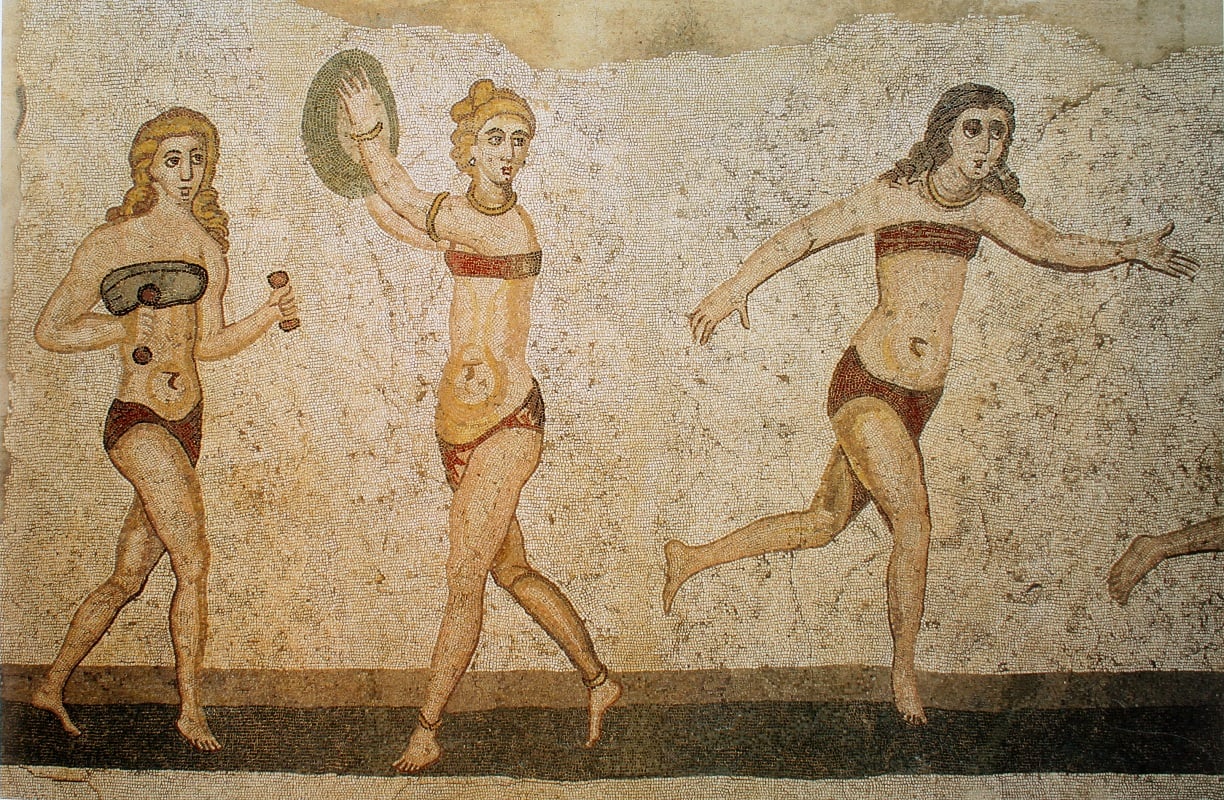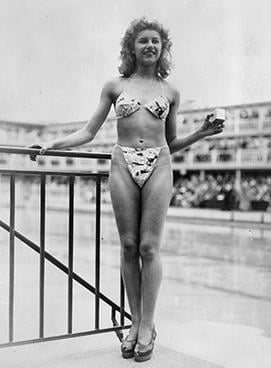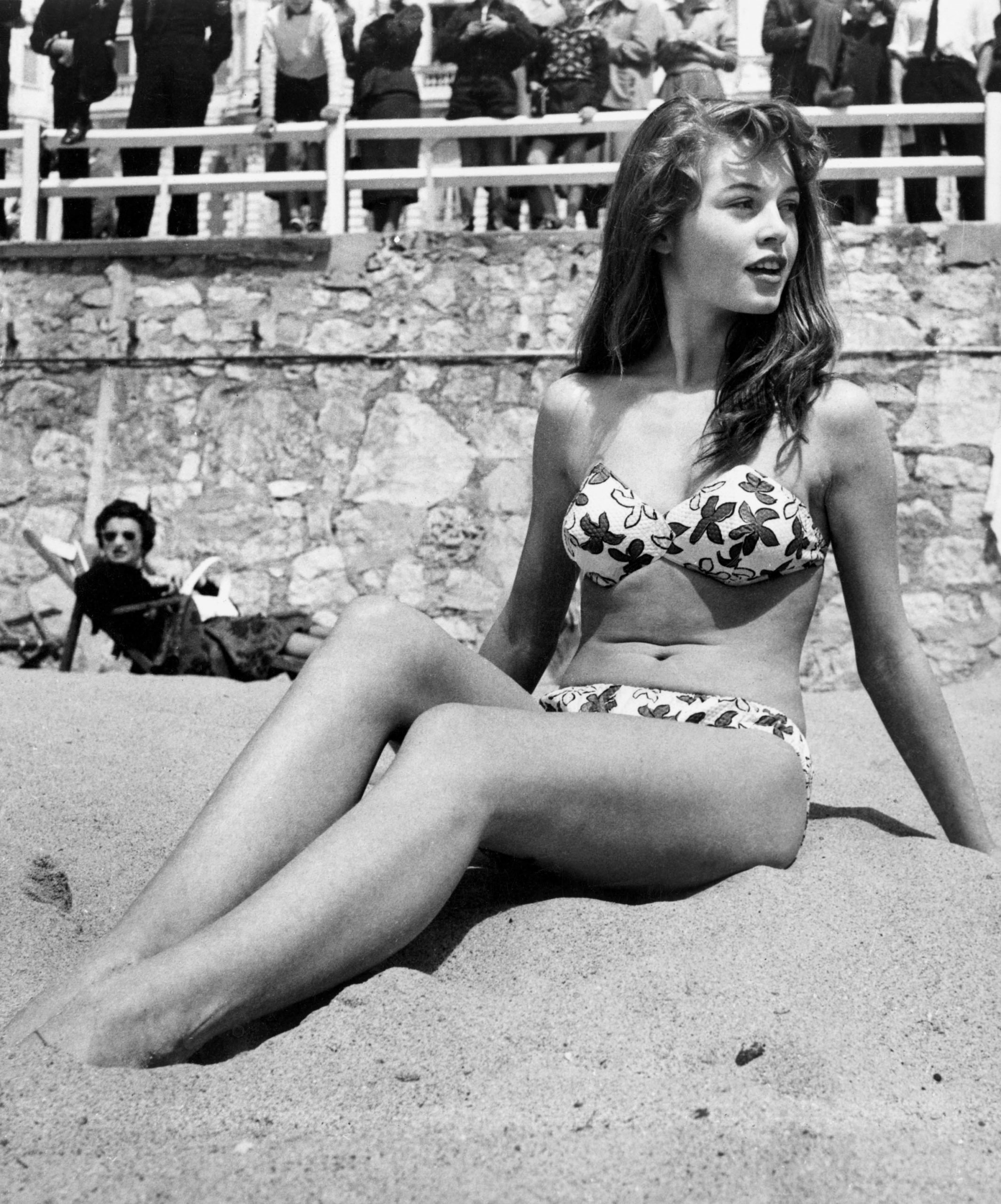In keeping with the proverb that great minds think alike, the inspiration for the name given to the popular two-piece bathing suit, the bikini, also came from the same source – the smallest particle of an element, the atom. As fate would have it, at the same time that a French automobile engineer named Louis Réard was working on the design of a revolutionary bathing suit after joining his mother’s clothing firm, nuclear testing was being done off the tiny island of Bikini Atoll in the Pacific Ocean. Réard believed, and was later found to be right, that the new swimsuit would create “excitement like the explosion of an atomic bomb” and for that reason decided to call it a bikini. The name became an icon of hysterical proportions, and Réard deserves the credit for that. But as for the invention itself, it turns out that someone else actually conceived the idea before him.
Jacques Heim, the son of Jewish immigrants from Poland, was born in Paris in 1899. At the age of 23, he began working in his parents’ business, a small fur shop, which he managed to grow within a few years. He opened an haute couture department where custom-made dresses and coats made of original fabrics were sold. In 1930, the shop became the Jacques Heim Fashion House and additional designs were created for young women. Two years later, in 1932, Heim made a two-piece bathing suit which he called the Atome, whose bra top had curls and flowers. Heim chose that name in order to underscore the skimpiness of the bathing suit, comparing it to the size of an atom. All of this occurred more than a decade before Réard introduced his invention.

In the 1930’s, Paris was considered one of the most liberal cities in the world and became a refuge for those who would later be called the ‘lost generation’ of Americans. Between the two world wars, the city attracted celebrated authors such as Ernest Hemingway and F. Scott Fitzgerald and its flourishing art scene boasted of great artists like Matisse and Picasso, and even our own Marc Chagall and Chaim Soutine. But it appears that when it came to fashion, Paris, and in this case Parisian women, were still conservative and not quite ready for Heim’s invention.
However, Heim was not only an imaginative designer. He was also a businessman with sharp instincts, which enabled his fashion house to grow and prosper for nearly four decades. His major breakthrough can be attributed to his belief that fur could be worked as a fabric. Consequently, wool and fur combinations, geometries of fur and textile, and fur accents became hallmarks of Heim’s designs in the 1930’s. In the same period, along with Chanel, Jean Patou and other designers, Heim entered the world of elegant sportswear.
During the Nazi occupation of Paris, Heim went underground and was an active member of the French resistance movement. He continued to run his business behind the scenes through a non-Jewish ‘front man’ who pretended to be the owner of the fashion house.

In June 1946, Heim returned to his creation, reintroduced the two-piece Atome swimsuit, and branded it the “smallest bathing suit in the world.” To advertise his invention, the marketing gimmick that Heim chose was to hire a plane to skywrite the words “Atome – the world’s smallest bathing suit.” Two months later, Réard unveiled his invention, and this time consciously and shamelessly stole Heim’s marketing idea. He also used a plane to skywrite the words “Bikini – smaller than the smallest bathing suit in the world.” For the sake of historical accuracy, it should be noted that the bikini designed by Réard was in fact smaller than the one designed by Heim. And unlike the bathing suit designed by Heim, Réard’s was cut below the navel.
Depictions of a two-piece garment worn by women for athletic purposes were found on excavated Greek urns and paintings, apparently dating back about 1,400 years. But the two modern versions of the two-piece swimsuits were first officially displayed at a fashion show in Paris on July 5, 1946. This time, Réard beat Heim to the punch when he photographed a nude dancer named Micheline Bernardini wearing a bikini. It is considered the first photograph ever taken of a woman wearing a bikini as we still know it today – including the exposed navel.
Actually, until the beginning of the 1950’s bikinis were deemed too suggestive by the puritanical society of those days. The glass ceiling was broken by the actress Brigitte Bardot, who wore the tiny bathing suit designed by Heim in the film And God Created Woman, which was released in 1956 and made the bikini an international sensation.

Bardot was the harbinger who heralded the success of the bikini, which subsequently crossed the Atlantic and reached the United States. There, the bikini accentuated the body of the actress and sex symbol, Jayne Mansfield, and after that of Ursula Andress, who emerged from the water wearing a bikini in the James Bond film Dr. No. In prudish America of the 1950’s, many were initially wary of the risqué swimsuit. The barrier to its popularity was overcome following the release of the film Beach Party in 1963, in which most of the actresses were wearing bikinis.
When Charles de Gaulle was president of France in the 1960’s, his wife, Yvonne, commissioned Heim’s services and he was appointed her in-house designer. Heim had other famous clients as well, including the actress Sophia Loren, Queen Fabiola of Belgium, the first lady of the United States, Mamie Eisenhower, and the actress, Gloria Swanson.

Heim was also active in public affairs and served as president of the Paris Fashion Trade Association from 1958 to 1962. He passed away in 1967, survived by a son and daughter. His son, Phillippe, tried unsuccessfully to keep his father’s business going, but ended up selling it in 1969 to a French lingerie company.
The obituary published in the prominent magazine WWD (Women’s Wear Daily) following Heim’s death said the following: “Heim’s great message was the successful combination between business and art. He didn’t want to be called a designer, but rather an editor of clothes. Heim came up with creative ways to bring couture to new audiences and was considered one of the key spokespersons of the fashion industry in France.”